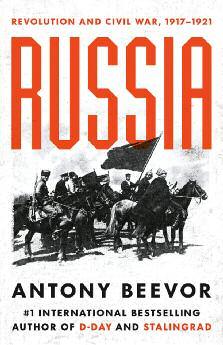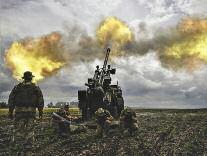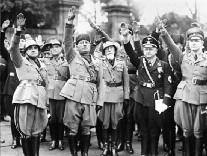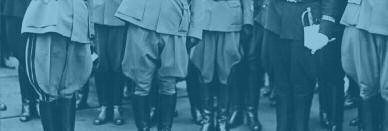
8 minute read
REVIEWED BY MANUS LENIHAN
The deleterious effects of Catholic Ireland marred O’ Connor’s childhood in the form of her mother’s violence and abuse. Sinead is uncompromising in linking her mother’s abuse to the oppressive nature of the Irish capitalist state theocracy which produced her. We learn that her music is a vehicle with which she can deal with this trauma and exorcise it, also becoming a vehicle for her to speak out against injustice. nothing compares does not shy away from the politics that are foisted upon young women in the music industry and elsewhere. The young star is pressured by music industry executives to conform to their limited view of popstar femininity – long hair, short skirt, high heels. The artist responds by staking her claim to herself and her own autonomy by shaving her hair off entirely. Executives do not stop there, when she becomes pregnant with her first child there is an attempt to manipulate her into having an abortion, telling her that she‘owes it’to the record label. Again, Sinead resists and eventually gives birth to her son Jake. Having escaped the particular brand of misogyny of Catholic Ireland, she was faced with it again and again in the form of the forprofit music industry and the capitalist press.
Despite the pillorying that Sinéad received from all angles of the press and music industry, she remained steadfast in speaking truth to power in a meaningful way. She is as much an activist as she is an artist. O’ Connor has protested and been vocal on abortion rights in Ireland, against racism, the killing of black men by
Russia: Revolution and Civil War
By Antony Beevor
Orion Publishing Co, 2022
reviewed by Manus Lenihan
In late 1917 and early 1918 several thousand armed men gathered by the Don river in russia. They were almost all military officers, and their aim was to overthrow the first working-class regime in history, installed by a popular revolution in October 1917. These officers were the first White Army, and they were about to begin three years of bitter conflict. Antony Beevor, in his new book russia: revolution and civil War, comments that these right-wing officers wanted to “save the russian people from themselves. ”
This attitude toward ‘the russian people’ is consistent throughout the book: again and again the author quotes something to the effect that russian peasants and workers were stupid, violent and even inhuman. racist police, and against the Gulf War to name just a few.
While it deals mainly with the years 1987 to 1993, the film brings us right up to the recent victories in Ireland on marriage equality and repeal and hints at the role that pioneering figures such as O’Connor played in helping to achieve these goals. In a recent interview director Kathryn Ferguson says“Ireland has changed and a lot of that’s from young, energised, collective activism” . It must always be re-stated that the sea tide of change we have seen in Ireland has been a result of such collective organising and brave voices such as O’ Connor’s which have been met with resistance every step of the way from Church and state. While we approach the 10th anniversary of the death of Savita Halappanavar as a result of misogynistic anti-abortion laws and the recent attacks on abortion rights around the world, not least in the US, Sinead O’Connor is a renewed figure of inspiration and resistance for a new generation of activists.
In all, Ferguson’s documentary is a masterclass in how to treat its subject, particularly when that subject is an incredibly talented, beautiful woman whose narrative has been commandeered by the media. rather than shying away from the exploitation and trauma experienced by the titular protagonist, nothing compares grabs these issues by the horns yet maintains Sinead's agency, dignity and personhood throughout, ultimately capturing her indomitable spirit in the face of the most intense witch hunt by the capitalist press.n
The author tells this story mostly from the point of view of wealthy or affluent people. For example, instead of being present with the people in the streets during the February revolution, the narrator is mostly in back-rooms with generals and counts and ministers as they send nervous telegrams to one another. In a few lines he dismisses the Soviets, the democratic workers’ councils, as a farce. He focuses, for page after page, on the failed attempts to get the Tsar’s brother to become the new Tsar.
The First World War is described in gruesome terms. But quickly we move on to the mutinies and desertions which brought the war to an end, which are described in terms even more gruesome. Beevor treats the land question with the same hypocrisy. He briefly acknowledges how terrible things were for the russian peasants. But when the “repulsive” peasants rise up against the landlords (p 53), he is outraged.
Elsewhere, he writes as if he cares deeply about democracy. This is difficult to take seriously when he defends the landlords, and thinks a different Tsar would have been the solution.
But the remark about ‘saving the russian people from themselves’ is also a back-handed way of admitting that the revolution enjoyed the support of a vast mass of the russian people.
Many people today assume that Lenin and the early
Soviet regime were cynical, brutal and corrupt, like the regime of Stalin and his successors. In fact, the early Soviet regime and the early Bolshevik / Communist Party were fundamentally different, and emerged out of a mass popular revolution.
This book does not admit of any difference between the two regimes. Any mention of Lenin is hedged with hostile words. We have ‘cynical, ’‘frequent rages, ’‘vile obscenities, ’‘contempt, ’‘obsessive’ — and that’s all just in one paragraph (p 62). Whenever Beevor cannot avoid mentioning something admirable or positive that Lenin did, the narrative is weighed down with farfetched explanations of why this was bad, actually, or else a strange exception to the rule. The author also has a bad habit of presenting his own far-fetched interpretations of Bolshevik policy and actions as if they were the straight facts.
The leaders of the White Armies are never subjected to the same scrutiny. They should be; they made the choice to rise up in arms against a popular revolution. A major reason why they lost was because they could not recruit and retain soldiers. By their own admission, the people were ‘infected’ with ‘Bolshevik’ ideas. And without foreign intervention the White cause would not have been viable at all. The unimaginable suffering and mass mortality of these bleak years should be blamed squarely on the White Guards and the Allies. Want to guess who Beevor blames it all on?
An extreme and chaotic situation developed over the course of 1918. Most of russia was occupied by White armies, backed by hundreds of thousands of foreign troops. Famine, growing since 1915, was now rampant. By late August 1918 many thousands of workers and communists had already been killed in waves of White Terror. The ‘socialist experiment’ was carried out in a burning laboratory. This was the context in which many of the promises of the revolution could not be delivered, and it helped to lay the foundations for Stalinist counter-revolution to develop at a later time.
Beevor sees things in a more simplistic way. As far as I can make out, he believes that everything the Soviets did was part of a master plan to cause as much misery as possible. To what end is unclear.
The early Soviet regime made important mistakes — and no wonder, in such a vast country and in such an extreme situation. The Cheka, the security police, grew out of control, leading to many injustices and provocative outrages. But Beevor gives an utterly false impression that the Cheka was unleashed, full force, immediately after the revolution, in a cold-blooded project of mass murder. In reality, the Cheka was very small at first, and its size and powers grew only as the Civil War escalated and the security situation grew truly dire.
The Soviet invasion of Poland in the summer of 1920 was a disaster. Many Soviet leaders such as Trotsky warned of this, and others such as Lenin were quick to acknowledge it afterwards. But Beevor’s account is one-sided. Blink and you’ll miss the crucial point that the Polish state started the war by invading Soviet Ukraine and seizing Kyiv as part of a grandiose plan to create an empire. Naturally, Beevor finds a way to blame this, too, on Lenin.
Compared with other hostile accounts of the russian revolution (there has never been any shortage), russia: revolution and civil War is unusually crude. Its other chief distinction is the sheer volume of graphic descriptions of violence which it has marshalled between two covers. But it has some value. When Beevor is caught up in his narrative, the book is quite readable. He had help from a number of researchers, so a large part of the book consists of details and anecdotes which you will not come across in other English-language sources. This makes it a worthwhile read and a useful resource. But in relation to the Civil War there are far better books than this on the market in English-speaking countries.
Beevor quotes a young red Guard as writing: ‘Compared to the enemy, we had a great advantage. We believed in the cause of universal justice as opposed to personal class privileges’ (p 163). But such moments, when he shows the reds as human, are very rare. In 500 pages, he says nothing good about a revolution which redistributed land, emancipated women and minorities, opened up education, provided free healthcare, and much else besides. But since the book mostly takes the point of view of the rich, and since, for the rich, nothing good came out of the revolution, this makes a kind of sense.n
S cialiSt alternative
i e y . t r s t p a l i i a s o c w . w w o r g i . y n t r a l i s t p a o c i w . s w w













